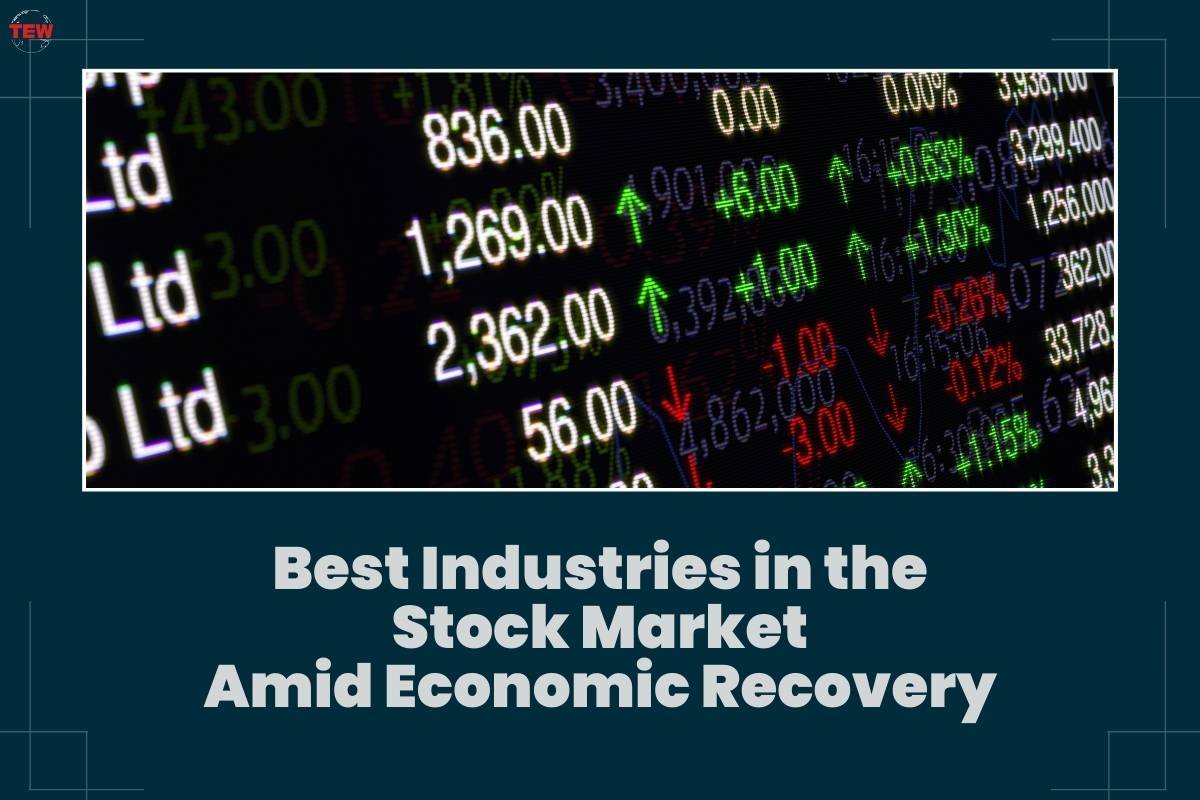The capital market and the business sector industries in stock market have been on a roller coaster ride for the past three years. The near-zero interest rates drove more capital inflows and borrowings from the pandemic recession. The macroeconomic recovery and enjoyed another boom from the second half of 2020 to 2021.
In 2022, we again faced challenges as inflation and interest rates regained momentum. The Russo-Ukrainian War and hard lockdowns in China aggravated these.
But not a year later, the US economy is again up for macroeconomic recovery. Inflation has started decelerating, while the Fed paused the rate hike for three consecutive meetings.
Nevertheless, many investors and business owners remain watchful despite the notable improvements. The Israel-Palestine War, OPEC oil supply cuts, and the holiday spending splurge can contribute to a temporary inflation uptick. So it’s no wonder the Fed remains cautious and may only start to cut rates in late 2024.
As we await the policymakers’ views and decisions in the next quarter, it is essential to maintain adequate liquidity levels. Households and businesses must cover expenses and, if possible, pay all borrowings.
As such, we must seek options to multiply our resources through businesses and investments. The industries in stock market remains the most promising investment option to generate earnings while managing risks. This article will highlight the best industries to invest in in 2024 to achieve financial freedom amid macroeconomic recovery.
Best Industries in Stock Market To Invest In
The industries in stock market remains the optimal choice for many investors and financial advisors. It has been through sharp crests and troughs over the years. Yet, it has kept rebounding and exceeding pre-crisis prices, showing its resilience.
The pandemic recession is a great example. Stock prices had a steep crash in less than a month. But in only a year, they rebounded and exceeded pre-pandemic levels. There were corrections in 2022, driven by inflationary headwinds. But today, the bullish trend of the stock market is evident.
Given this, more individuals have become drawn to the industries in stock market. Even the inexperienced ones believe they can make a fortune from stock trading. So, it’s no surprise that many stock market newbies look for various free trading ebooks to enrich their knowledge of the market.
Hospitality
Hospitality was among the hardest-hit industries in stock market during the peak of the pandemic. The stringent health protocols and border closures restricted leisure and business travel.
But as the economy recovered and restrictions eased, the industry enjoyed continued recovery. Even the macroeconomic volatility in 2022 did not halt travel spending. In fact, it is one of the most resilient discretionary spending today.
It has not yet reached pre-pandemic levels as elevated prices, particularly fuel and airfare, remain a hindrance. Yet, the industry is poised to enjoy a complete recovery in 2024. Thanks to revenge travel that does not seem to fade, driven by periods of lockdowns and remote work flexibility. And as macroeconomic indicators become more manageable, travel may continue to boom.
Many recent studies show rosy winter and spring travel outlooks even if the summer and autumn peaks have already ebbed. One study shows that 83% of Americans will take at least one trip by the end of this year.
Another essential thing to note is the faster increase in air travel than land travel, thanks to decelerating fuel prices, which help lower airfares.
As of writing, domestic travelers are expected to rise by 2.2% from December 23 to January 1. More specifically, the total number of those traveling by plane may reach 115.2 million. While it stays lower than 119 million in 2019, travel recovery is within reach.
Moreover, the demand for RVs has already plunged after prices went high. In 2021-2022, people opted to go to campsites and domestic destinations with their RVs to cope with inflation.
Fuel prices have already decelerated, and RV prices are no longer enticing. Travelers are back to hotels and beaches, which may drive more demand and revenue per available room or RevPAR. Also, their occupancy rates continue to increase and may return to 2019 highs.
As for pecking order, Marriott (MAR) and Hilton (HLT) are the top picks. These two hotels are capitalizing on their expansion to cater to all types of travelers. Also, their fee-based business model makes them flexible to market changes. They can increase and lower rates while ensuring constant revenue inflows from their franchisees. This gives them an edge over their close competitors like Hyatt (H).
Their impressive ten-year stock price returns were even better than the S&P 500 (SPX) average. This shows their high resilience amid all the market ups and downs they have experienced. The image below shows that MAR and HLT were winners. They have high average annual returns with manageable standard deviation. Their Sharpe Ratio of 0.26 and 0.21 show they have the best risk-reward balance.
Image from author’s calculations
Human Capital Management Solutions (HCM)

Human Capital Management solution companies or HCM companies are also excellent choices. Since the pandemic, they have been integral in the business sector and the labor market.
As companies adapt to the digital revolution, payroll and accounts payable management become new challenges. With HCM solutions, companies can enhance workflow management to raise efficiency and streamline business processes.
HCM solutions are also crucial as remote work flexibility prevails. In a study conducted by Forbes, 12.7% of full-time employees work from home.
Meanwhile, 28.2% work in a hybrid setup. In addition, 16% of American companies are fully remote. Hence, the demand for HCM solution companies could rise by over 30% in 2025.
As for the pecking order, Automatic Data Processing (ADP) and Paychex (PAYX) are top pricks. Their average annual price returns over the past decade have reached 14.78% and 12.28%, respectively.
While Paycom (PAYC) enjoyed average returns of 40.70%, its actual volatility was too high, given the standard deviation of 46%. It had a wide difference from ADP and PAYX, both at only 24%.
Image from author’s calculations
Logistics

Logistics was also one of the hardest-hit industries in stock market in 2020. Restrictions disrupted the movement of goods and the supply chain globally. But as the pandemic subsided, the global economy has reopened. China’s hard lockdowns in the fourth quarter of 2022 also became challenging. But now, logistics companies are on their way to recovery.
E-commerce is one of their primary growth drivers as non-brick-and-mortar businesses become more popular. Supply chain technologies and dispatch monitoring software can also help speed deliveries and enhance inventory management.
Most importantly, many businesses are heavily reliant on logistics providers. Note that 99% of businesses in the US are within the SME sector. They lack network capacity and flexibility to adjust or cancel orders and purchases. Only a few companies, like Amazon (AMZN) and eBay (EBAY), have these privileges. Logistics will remain a primary growth driver in the US economy. Hence, logistics stocks are more enticing today.
As for top investments, Old Dominion Freight Line (ODFL) and J.B. Hunt (JBHT) head the list. Over the past decade, they have given decent price returns despite being vulnerable to recessions. They are way better than their larger peers, FedEx (FDX) and United Parcel Services (UPS). These two giants have a negative Sharpe Ratio, implying they are not viable investments.
Image from author’s calculations
Moreover, ODFL and JBHT have much better liquidity than UPS and FDX. Their Net Debt/EBITDA is lower than 1x at 0.04x and 0.78x, respectively. It shows that JBHT and ODFL are earning enough to cover their borrowings.
Even better, a ratio of less than 1.0x indicates that it will only take a year to pay all their borrowings.
Meanwhile, UPS has a decent ratio of 1.9x but more than twice as much as JBHT. Lastly, FDX has 3.83x, which is risky since it is a capital-intensive company. The high ratio may be directly related to the measly stock price returns. It has a limited capacity to speed up returns for investors.
REITs

REITs are often perceived as high-risk investments. We can’t blame investors, though, given the recent changes in the real estate market. The skyrocketing price of residential homes is tied to the real estate bubble burst.
Despite this, we remain optimistic about its 2024 performance. First, residential home shortages are still high. The US is currently short of at least 5.5 million houses. We can attribute it to the cautious approach of property builders in the aftermath of the Global Financial Crisis. Given this, the elevated property price is primarily driven by demand, not speculative mania.
One of the best things to appreciate about REITs is their constant dividend payouts. REITs are a go-to option for dividend investors. The industry has one of the highest dividend yields. Meaning prices relative to dividends are much lower than those of other industries in stock market.
Consider American Tower (AMT), Ventas (VTR), Simon Property (SPG), and Realty Income (O). Their dividend yields are 4.0%, 4.4%, 7.0%, and 6.2%, respectively. These are also far higher than the SPX average of 1.55%. Hence, they pay much higher dividends than many other stocks in the index.
Restaurants
Restaurants also experienced the disruptive impact of the pandemic. Restrictions obstructed their growth potential. But as the digital transformation peaked, cashless payments and delivery apps became their partners. Restaurants continue enjoying positive spillovers of return-to-office (RTO) and hybrid work. They also benefit from the increased foot traffic around malls.
Starbucks (SBUX) is a top pick. The double-digit stock price returns and relatively low standard deviation are some considerations. Also, it continues to expand and see many untapped potentials in Asia Pacific. We can check its impeccable topline growth.
In the third quarter of 2023, its revenue rose by 12%, while its operating margin reached 17.4% versus 12.6% in 3Q22. It shows a sustained revenue increase and enhanced efficiency amid its expansion. Even better, its Net Debt/EBITDA remains decent at 3.14x, which is still lower than the maximum range of 3.5x-4.0x. As a capital-intensive company, SBUX can sustain its growth and cover borrowings and dividends.
Lastly, it has a more solid customer base than its close competitor, Tim Hortons (QSR). Indeed, SBUX stays more popular and dominant with its domestic and international market presence.
Takeaways
Stock market trading can be risky and yet exciting at the same time. With adequate knowledge and experience, any individual can find the best stock for them. You should still consider your finances and risk appetite for your risk-reward management. But, choosing the best industries in stock market depending on macroeconomic conditions can help you derive gains from trading.




